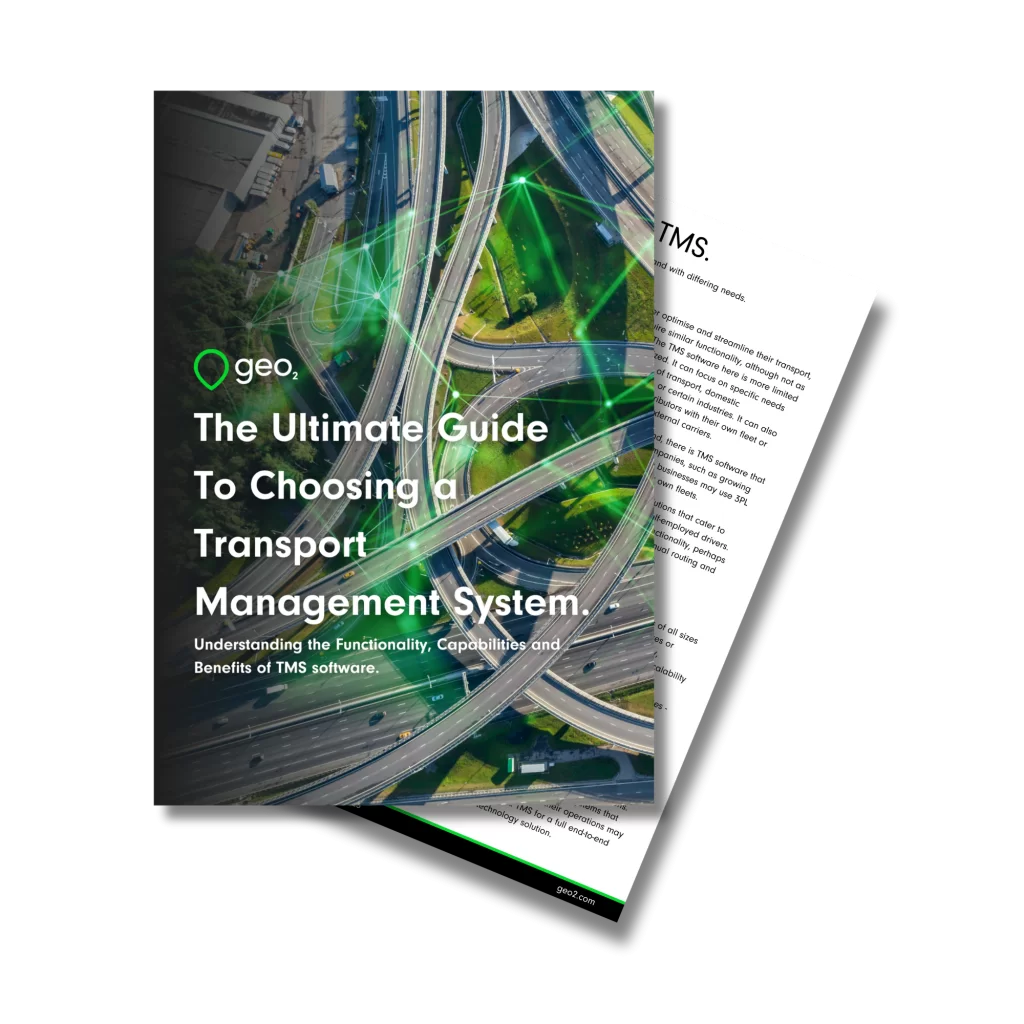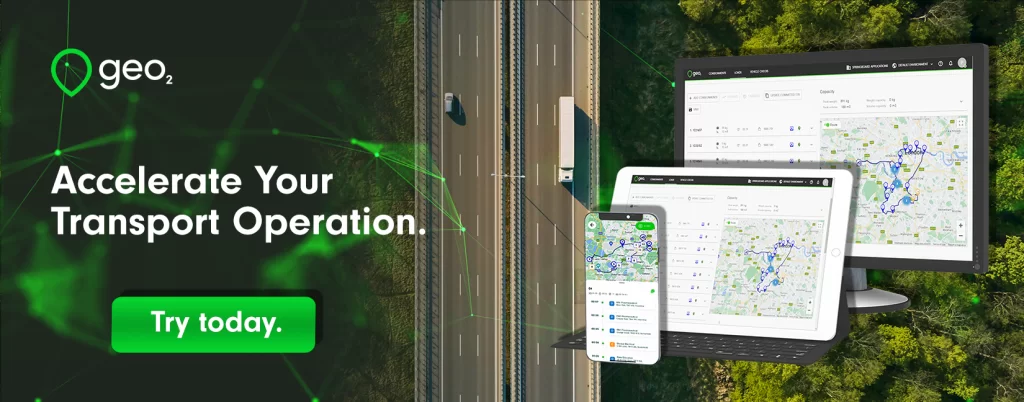
Is There Still a HGV Driver Shortage? The Outlook for 2024.
Introduction.
Back in October 2021, The Road Haulage Association estimated there was a shortage of 100,000 qualified HGV drivers in the UK.
This came after news reports of a lack of HGV drivers had led motorists to panic buy fuel, causing widespread fuel shortages, even for commercial vehicles.
The ripple effect of the HGV driver shortage has been palpable since then too, with disrupted supply chains within the retail and ecommerce sectors. There have been delivery delays, product shortages and price increases, all of which have cast a shadow on economic recovery.
Fast forward to the end of 2023, and it’s time to assess the situation anew. Where are we now and is there still an HGV driver shortage going into 2024?
Need help choosing a TMS?
Download the Free Guide Now.

Table of Contents.
What Caused the UK HGV Driver Shortage?
The initial HGV driver shortage has been caused by a number of factors, all coming together at once.

Table of Contents.
Impact of Brexit and Decline in EU Worker Numbers.
The UK’s departure from the European Union made it more difficult for EU drivers to work in the UK. Brexit ended the freedom of movement between the UK and EU countries, meaning EU drivers would require additional documentation and visas to work in the UK. This made it more bureaucratically challenging and less appealing for EU nationals to either take up or continue in driving positions in the UK.
The ONS Annual Population Survey estimated that the number of EU nationals employed as HGV drivers had declined by 16,000 in the year ending March 2021 compared with the previous year.
The Role of the Covid Pandemic.
The pandemic also brought disruption. As economies and countries began to shut down, many European drivers returned home.
Additionally, training and testing processes for HGV drivers were affected, meaning there were significant delays for new drivers to become qualified and take on driving positions.
War in Ukraine.
The war in Ukraine has also contributed to the HGV driver shortage in the UK. Many Ukrainian drivers who were working in the UK have returned to their home country to fight in the war, leaving a further gap in the workforce.
Existing Lorry Driver Shortages.
Even before Brexit and Covid, there had been a decade-long shortage of drivers, estimated to number around 60,000 by 2019. Many drivers were approaching retirement age and there were not enough younger people joining the profession.
Lorry driving can be a lonely and demanding job, with long hours, lots of time away from home and poor working conditions. So, it was already suffering from a lack of interest, with the gap only somewhat being filled by EU workers.
Existing Lorry Driver Shortages.
Even before Brexit and Covid, there had been a decade-long shortage of drivers, estimated to number around 60,000 by 2019. Many drivers were approaching retirement age and there were not enough younger people joining the profession.
Lorry driving can be a lonely and demanding job, with long hours, lots of time away from home and poor working conditions. So, it was already suffering from a lack of interest, with the gap only somewhat being filled by EU workers.
Beyond Britain: Global Driver Shortages.
The issue of HGV driver shortages is not unique to the UK. In many regions, there are similar factors as seen in the UK to blame for the shortages: an ageing workforce, stringent regulations, long working hours and a younger generation less inclined to take up trucking.
The trucking industries in the United States and Canada have been reporting significant driver shortages for many years.
Issues in European countries have been exacerbated by regulatory changes. Central and Eastern European countries, which were traditionally sources of drivers for Western Europe, are now facing shortages as well.
In China and Japan, ageing populations combined with the younger generation’s disinterest in driving jobs has led to a shortfall. In India, despite its large workforce, the challenge is finding skilled and trained drivers, especially those qualified to drive today’s more modern heavy goods vehicles.
Australia too has faced a chronic shortage of truck drivers. The vastness of the country and the long-haul nature of many routes doesn’t help here.
How the HGV Industry Has Responded to the Driver Shortage.
With the spotlight on HGV driver shortages, the UK government took a number of steps to address the shortages.
Included among the 33 initiatives, rules and restrictions were relaxed to permit late-night supermarket deliveries and more flexibility with driver hours.
Driver training bootcamps were introduced, along with incentives for employers to take on apprentice drivers.
The number of HGV driving tests available was increased by 90% and a campaign was launched to recruit extra driving test examiners.
Employers too have rallied, by improving conditions and offering higher starting salaries, with some new drivers benefitting from starting salaries over £40,000.
Current State of the HGV Driver Market.
So, are we still seeing a shortage of HGV drivers in the UK, or is there a recovery in sight?
Thanks to the industry’s own initiatives and governmental measures, the shortages have been reduced. But despite some stabilisation, the situation is far from resolved. UK Logistics said in November 2022, “The number of drivers in employment remains stubbornly at 2019 levels when there was an estimated chronic shortfall of 60,000 drivers.”
As of March 2023, the situation is the same. The number of HGV drivers remains at 2019 levels and so the UK is still 60,000 HGV drivers short.
The pressure has been taken off the situation somewhat by the economic downturn and the cost of living crisis, which have caused lower levels of economic activity. As people buy fewer goods, there is therefore less need for their transportation.
But in the long term, with economic improvement, the shortages will continue to be a problem. It will take several years to train and recruit enough drivers to meet the current shortages, let alone any recovery in demand. We therefore face a continuing struggle that could impact supply chains and pricing for some time to come, with some predictions it could last until 2032.
Are you finding it difficult to attract and recruit HGV drivers for your distribution business? Join the conversation on LinkedIn and let us know.
To maximise the use of your available drivers, Geo2 can optimise your routes, reduce fuel consumption and expedite deliveries. Try it for free today or book a demo to find out more.
Why Consider Geo2?
Geo2 is a cloud-based system, with an app and web platform that was developed by Springboard Applications, a subsidiary of Balloon One.
It is a scalable system that can be used by a wide range of businesses, from independent delivery drivers, right up to enterprises and 3PLs that manage their own fleets.
Here is a summary of the main features and benefits:
- Sophisticated route planning and optimisation
- Cloud-based system accessible via the web
- Mobile driver app (Android and iOS)
- Proof of delivery
- Status updates and notifications
- Real-time fleet tracking
- API for integration with ERP, WMS and other supply chain software
- Fully scalable
- Subscription-based pricing
- Free version for single users
Geo2 is designed to help you make the most deliveries in the shortest amount of time, while minimising costs and fuel consumption.







